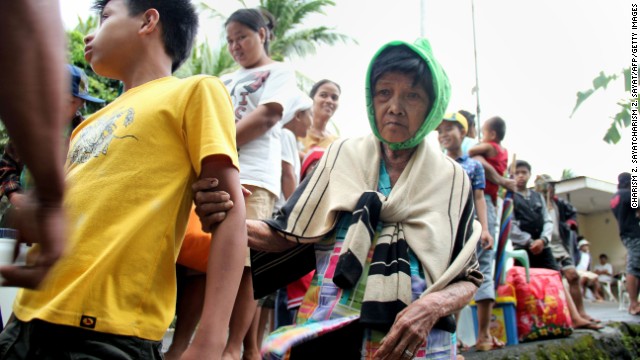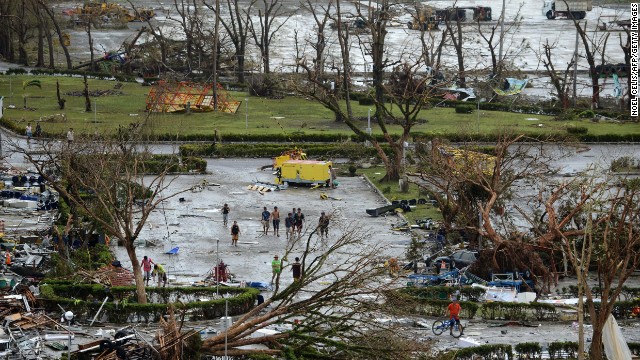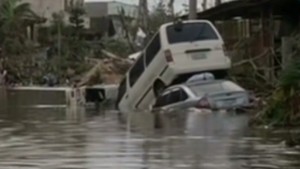There is enormous destruction and loss of life in the Philippines, after a powerful typhoon, like nothing ever seen in the area, ripped through the islands Friday. NBC's Angus Walker reports.
MANILA – The death toll from one of the strongest typhoons ever to make landfall could top 1,200, the Red Cross said Saturday after fierce winds and flooding from Typhoon Haiyan slammed the Philippines.
Early reports suggest 1,000 people have died in the coastal city of Tacloban and at least 200 more in the Samar province, according to Gwendolyn Pang, secretary general of the Philippine Red Cross.
Pang said the numbers came from preliminary reports by Red Cross teams on the ground.
So far, government officials have confirmed 138 deaths. At least 118 of those were on hardest-hit Leyte Island, where Tacloban is located, national disaster agency spokesman Maj. Reynaldo Balido told The Associated Press.
The death toll is expected to rise sharply as rescue workers reach areas cut off by the fast-moving storm, whose circumference eclipsed the whole country and which late on Saturday was heading toward Vietnam.
The weather system nearly 200-mph winds as it rampaged through the Philippines on Friday. It was downgraded overnight from a "super typhoon," equivalent to a category 4 or 5 hurricane, to a typhoon.
Along the way, it cut off many of the country's lines of communication, making it hard to establish the extent of its damage.
Pang stressed that the death toll estimates were being checked, and that a more precise number would emerge as rescuers reached unchecked areas.
Hundreds of homes were flattened and almost 800,000 people were evacuated to emergency shelters as Haiyan triggered mudslides, flash flooding and a storm surge with waves of up to 30 feet Friday.
Because the Philippines is made up of more than 7,000 islands — more than 2,000 of them inhabited, with their own local authorities and infrastructures — it typically takes two to three days for full reports to reach rescue agencies.
The Weather Channel's Jim Edds, in Tacloban, said there was a desperate need for drinking water for survivors. "We need it now, we needed it 12 hours ago,"he said in a brief phone call via satellite phone
Edds added that there was a massive wall of water when the storm hit, and described the current situation as chaotic. "Relief is needed here. Now."
Alastair Jamieson reported from London. NBC News' Alex M. Johnson contributed to this report.


 Fallen trees litter the ground at the Tacloban airport in the Philippines in the aftermath of Super Typhoon Haiyan on Saturday, November 9. The most powerful cyclone in three decades battered the Philippines, killing a number of people and leaving more than 100 bodies scattered on the streets of this coastal city. Haiyan, one of the most intense typhoons on record, plowed across the country on Friday, with monster winds tearing roofs off buildings and giant waves washing away homes.
Fallen trees litter the ground at the Tacloban airport in the Philippines in the aftermath of Super Typhoon Haiyan on Saturday, November 9. The most powerful cyclone in three decades battered the Philippines, killing a number of people and leaving more than 100 bodies scattered on the streets of this coastal city. Haiyan, one of the most intense typhoons on record, plowed across the country on Friday, with monster winds tearing roofs off buildings and giant waves washing away homes.



You need to be a member of Earth Changes and the Pole Shift to add comments!
Join Earth Changes and the Pole Shift